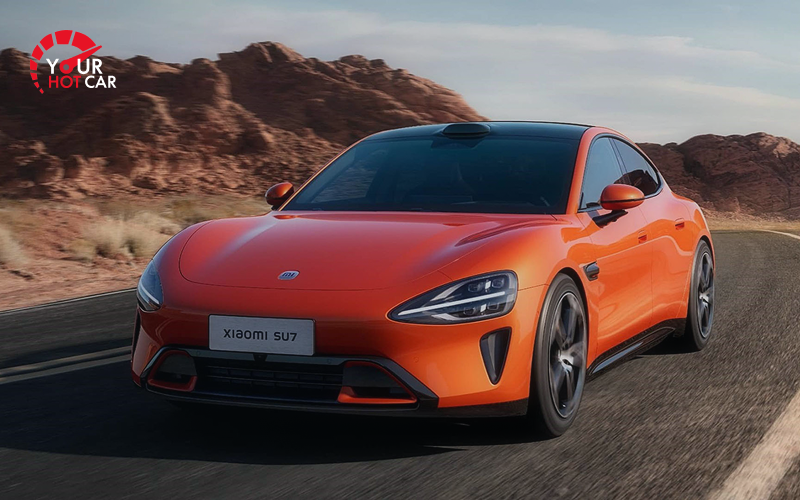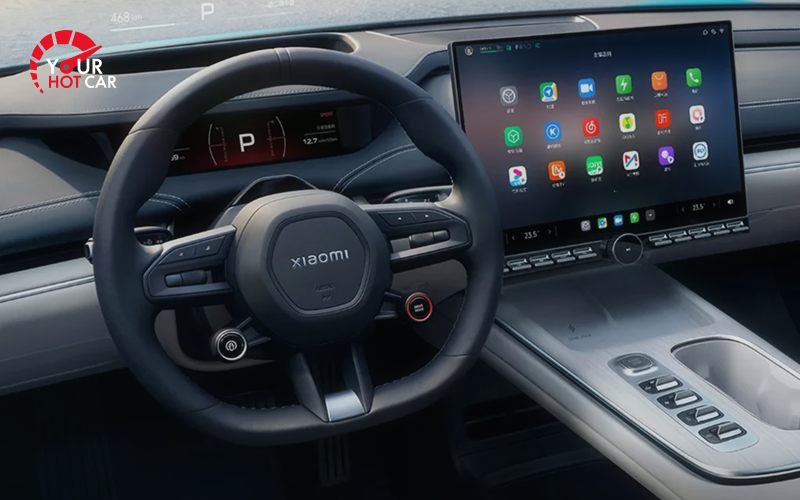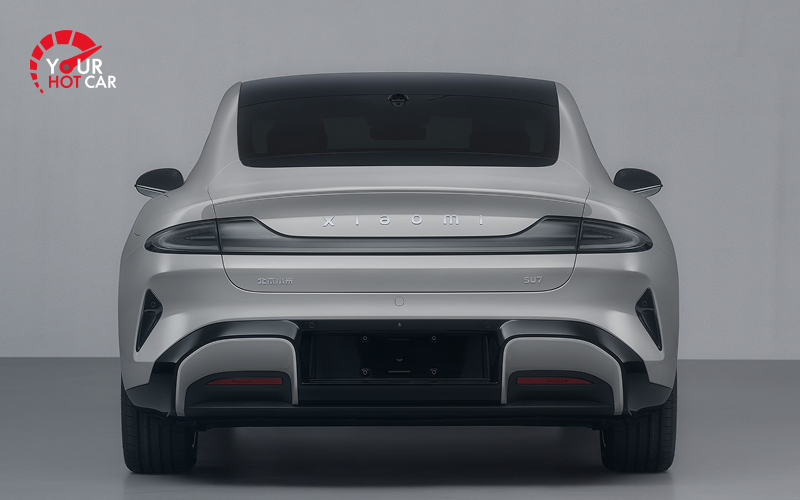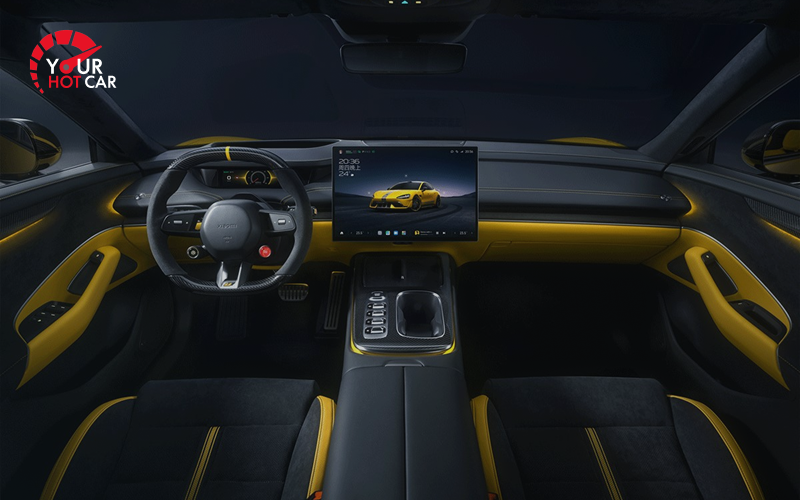By the YourHotCar Editorial Team
First Impressions: What’s the Big Deal About the Xiaomi SU7?



If someone told you five years ago that Xiaomi — the phone company — would build one of the fastest and smartest electric sedans on the road, you’d probably laugh. But here we are. The SU7 isn’t just real, it’s shaking up everything we thought we knew about EVs.
This article isn’t just a spec list. It’s a breakdown of what actually makes this car exciting, what it feels like to drive, and who it’s really for. We’re skipping the marketing talk and getting straight to the stuff you’d want to know if you were telling a friend about it.
Design That Doesn’t Try Too Hard
From the front, the Xiaomi SU7 immediately gives off strong Porsche Taycan vibes — but not in a lazy copycat way. Think of it like Xiaomi watched what the Germans did, nodded in respect, then decided to remix it with their own flair. Frameless mirrors, clean lines, and a gently sculpted roof hump all play a role in reducing drag while giving the car a futuristic, tech-inspired identity.
Where the Taycan leans heavy on elegance and aggression, the SU7 is sharper and more tech-forward. The active rear wing deploys automatically at high speed or when braking hard — not just for show, but to genuinely add downforce. And subtle lighting accents front and back give it that modern electric vibe without going full cyberpunk.
Inside, it’s not about luxury for luxury’s sake. Xiaomi took a practical approach: physical buttons for core functions, a huge 56-inch HUD that stretches across the dash, and a HyperOS interface that feels like you’re swiping through a premium tablet — only faster. The seats are sporty yet soft, with Alcantara and carbon fiber where it counts.
Compared to something like a Tesla Model S, which goes all in on minimalism, the SU7 feels like it’s designed for people who still want to feel the machine — not just stare at a screen. It’s thoughtful without being overdesigned, sharp without trying too hard.
You also get a solid range of color choices — not just the usual black, white, or silver. Xiaomi introduced some bold finishes like Ocean Blue, Graphite Black, and a unique satin matte green that really stands out in traffic without screaming for attention. Each color is paired with trim elements that either contrast or complement it, giving the car a more cohesive and polished look than you might expect from a first-gen model.
Another Xiaomi signature? The design language across the car subtly references its tech roots — from the pixel-style tail light animations to the glossy finishes that resemble smartphone ceramic shells. Even the charging port has a smooth, click-in mechanism that feels more like plugging in a premium device than fueling a car.
This isn’t just EV design by committee — it feels like Xiaomi had a clear visual identity they wanted to express, and it shows.
Everyday Speed — and Then Some
Let’s start with real-world results: the Xiaomi SU7 Ultra clocked a blistering 6:22.091 lap time on the Nürburgring Nordschleife. That’s faster than hypercars like the Mercedes-AMG One and Lotus Evija — two machines that cost several times more. The test wasn’t just a one-off PR stunt either. Xiaomi ran the car across multiple sessions, capturing consistent times and showcasing impressive thermal stability during high-performance runs.
Underneath it all is a tri-motor setup with intelligent torque vectoring, sending power exactly where it’s needed mid-corner. The result? 0–100 km/h in 1.98 seconds. But what’s even more surprising is how civil the car feels when you’re not chasing lap records. It doesn’t lurch or feel twitchy. You can daily this car and still know there’s a monster under the hood.
High-speed testing on closed tracks also showed the SU7 Ultra maintains its aerodynamic balance even north of 300 km/h, with the active wing and suspension system adjusting on the fly. Compared to most EVs in this segment — or even high-end ICE sports sedans — the SU7 feels incredibly planted, sharp through corners, and drama-free at speed.
It’s not just about raw stats. The way this car delivers that performance — quietly, confidently, without begging for your attention — is what sets it apart.
Tech That Makes Sense
This isn’t just about horsepower. The Xiaomi SU7 is a tech enthusiast’s dream — seriously, if you’ve ever wished your car worked like your phone, this one actually does.
First off, it runs on a Snapdragon 8295 chip — that’s the same generation tech found in top-tier smartphones and tablets. So the infotainment screen is lightning fast, doesn’t lag, and handles multitasking like a pro. Think split-screen maps and music while adjusting climate settings — without a hiccup.
Then come the two NVIDIA Orin chips under the hood — these power the advanced driver-assist systems. From adaptive cruise to lane-centering, obstacle prediction and semi-autonomous driving modes, everything feels one step ahead. It’s the kind of tech that reads traffic better than most people do.
And because it’s Xiaomi, the SU7 links seamlessly with the rest of your gadgets. Got a Xiaomi phone? The car syncs your themes, contacts, and even climate preferences. You can unlock it, set your drive mode, or start pre-heating — all from your phone.
Even the software updates are smart. Xiaomi pushes over-the-air updates not just to fix bugs, but to add features — like extra sound modes, energy-saving profiles, or improved battery management. It’s not a car that gets old — it evolves.
Bottom line? This is one of the first electric cars that really feels like it was built by a tech company, not just a car company trying to be cool. It’s smart, fast, and it works like you expect your best device to.
Comfort Without Compromise
Despite all the racing talk, this car isn’t exhausting to drive. The dual-chamber air suspension smooths out the ride, absorbing bumps without floating or disconnecting you from the road. The cabin feels solid and serene — thanks to Xiaomi’s extensive use of noise insulation and double-glazed windows.

Now let’s talk practicality. Compared to a Porsche Taycan, the Xiaomi SU7 feels noticeably roomier in the rear. You’ve got more legroom and better visibility, making it easier to daily drive or take on longer trips. The rear seats even have a slight recline — something missing from a lot of sports sedans.
And the boot? Bigger than you’d think. It’ll fit a couple of suitcases or a week’s worth of groceries, no problem. That’s one of the trade-offs Xiaomi nailed: you’re not sacrificing everyday use just for speed.
If you’ve ever sat in a Tesla Model S and thought “cool design, but I miss actual materials,” the SU7 delivers. Alcantara, carbon fiber, and physical buttons bring back that sense of driving something mechanical, not just digital.
So are you overpaying for comfort here? Actually, no. You’re getting Taycan-level comfort, with more tech and less minimalism — for a noticeably lower price tag.
Is It Safe? Absolutely
Carbon ceramic brakes. A chassis that sticks to the road. And intelligent alerts that don’t nag but actually help. Xiaomi took safety seriously here — which matters when you’re driving something this quick.
Add adaptive cruise, lane control, and a high-res HUD, and you’ve got one of the most high-tech safety setups in its class.
The Sound of Speed
Let’s be honest — EVs are fast, but they often feel a bit… silent. The Xiaomi SU7 changes that. It comes with built-in external speakers that produce simulated engine sounds based on your drive mode. You can choose from different ‘sound waves’ that mimic the growl of a sports car, a more futuristic EV hum, or even total silence if you’re cruising through the neighborhood late at night.
What makes it special is how well the system responds. Accelerate hard, and the sound builds with intensity. Let off the throttle, and you get a subtle deceleration tone — kind of like a digital version of engine braking. It’s not just for show — it adds feedback to your drive, especially at lower speeds where EVs usually feel disconnected.
You can tweak it all in the settings. Want to hear it only inside the cabin? No problem. Prefer full-volume roar outside when in sport mode? Done. The customization means you can go from stealth mode to track-ready acoustics in a tap.
And no, it’s not fake in a cheesy way — it actually enhances the driving experience and makes the SU7 feel alive. Kind of like turning on the right background music when you hit your favorite road.
Pricing and Why It’s a Big Deal
Right now, the standard Xiaomi SU7 in China starts at ¥215,900 (roughly £24,000), while the Pro and Max versions go for ¥245,900 (£27,000) and ¥299,900 (£33,000). The top-tier SU7 Ultra initially launched at ¥814,900 but was later reduced to ¥529,900 — about £58,000.
Now, that’s in China. Once it hits the UK with RHD configuration and import duties, you’re realistically looking at around £27,000–30,000 for the base model and up to £65,000–70,000 for the Ultra version. Still, that’s significantly cheaper than a Porsche Taycan or a Tesla Model S.
Compared to rivals, it’s a surprisingly strong value. A Taycan starts at around £80,000, and a similarly specced Model S sits near £75,000. With the SU7 Ultra, you’re getting Taycan-level performance — and arguably more integrated tech — for at least £10,000–15,000 less.
As for UK availability: official sales haven’t been announced yet, but sources suggest the SU7 Ultra could arrive in the UK around March 2025, while the more affordable versions might not show up until 2026 or later.
Bottom line: if you’re watching your budget but want serious performance, high-end design, and cutting-edge features — this car is one to watch.
Final Thoughts: Should You Buy One?
Let’s keep it simple — if you’re the kind of person who loves tech, enjoys driving, and wants something fresh that doesn’t just follow the crowd, the Xiaomi SU7 is 100% worth considering.
Here’s what you’re really getting:
- Supercar performance for half the price
- Next-level tech that actually works and feels modern
- Daily comfort and space, not just a fast toy
- A fresh design, not another lookalike EV
Yeah, it’s a first-gen car, so there might be a few rough edges. But Xiaomi’s already proven they can iterate fast — just like they do with phones. Plus, with over-the-air updates, the car will keep getting better over time.
The only real wait? Availability in the UK. But if they deliver what’s promised, and the price stays competitive, it could be the EV to beat in 2025.
So — would we buy it? Honestly, yes. We’re excited. And we’ll be watching closely as Xiaomi brings this thing west.
Stay tuned — YourHotCar team is tracking every update.
